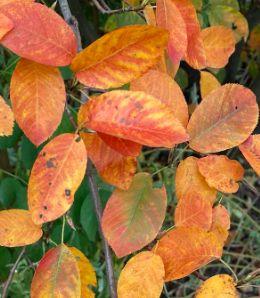Common Serviceberry
Other common names: Shadbush, Shadwood, Sugarplum, Scientific Name: Amelanchier
Conservation status: This tree is not currently experiencing any major threats.Therefore, this species is assessed as least concern




Some distinct features to recognize Common Serviceberry:
Multi-trunked with smooth grey bark, oval or round leaves, and white flower clusters.The berries are red when they are young, but as they ripen, they turn a rich blue or purple colour
In the spring, the blossoms benefit insects, and as they are early bloomers, they are a very important source of food for these insects. Some of those insects include, tiger, viceroy, and admiral butterflies, In the summer, when the serviceberries ripen, they are also a source of nutrition for many species of birds such as cedar waxwings, robins, catbirds, and mockingbirds.
In NativeAmerican culture, Blackfoot people made a sacred soup from the berries, to be shared at special events.The serviceberry is also considered one of the sacred Life Medicines of the Navajo tribe. The roots and bark were used as medicinal herbs, and the blossoms were seen by the Iroquois and Lenape, as a sign that it was correct time to plant crops.

